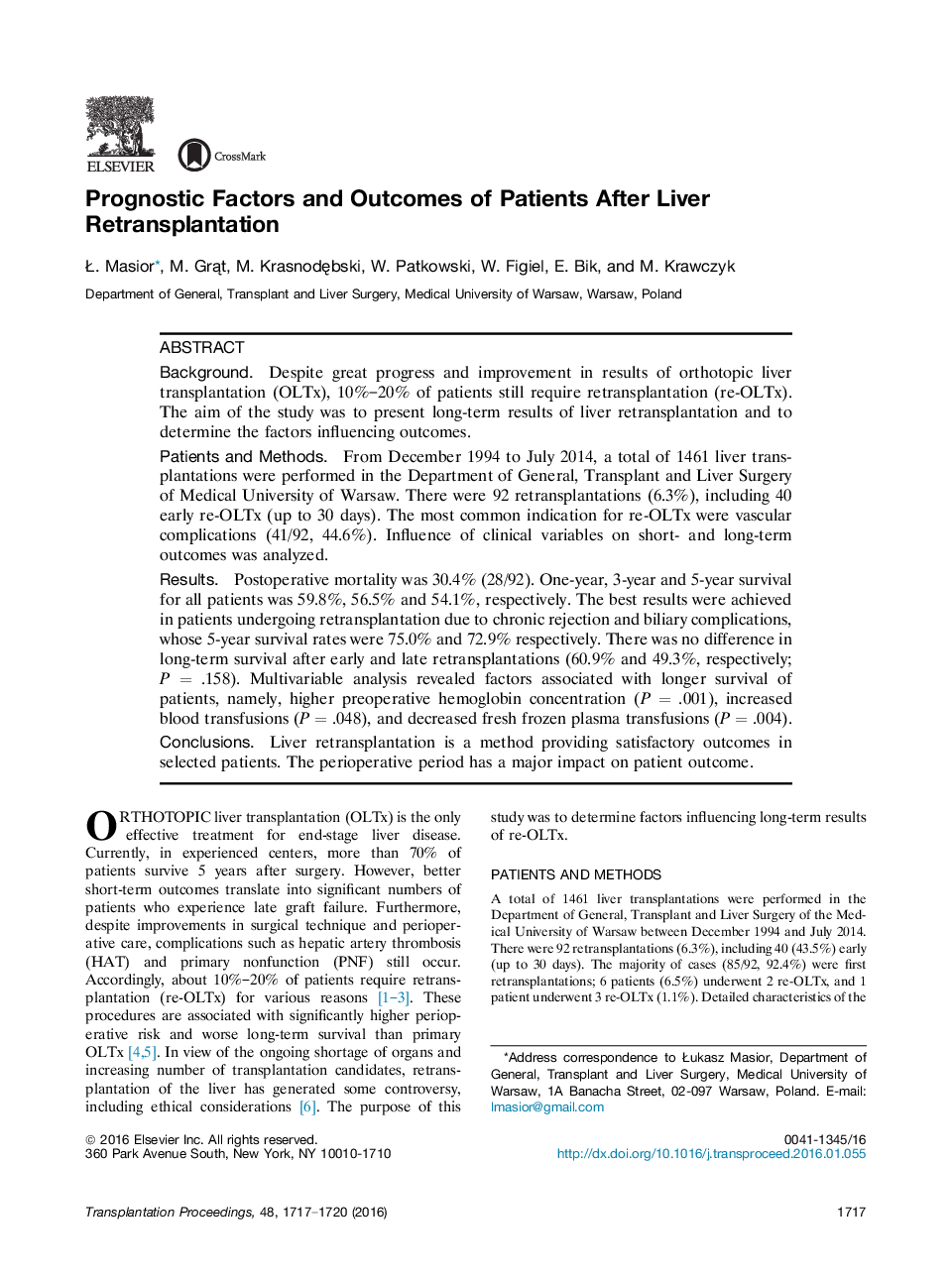| Article ID | Journal | Published Year | Pages | File Type |
|---|---|---|---|---|
| 4256105 | Transplantation Proceedings | 2016 | 4 Pages |
•Retransplantation of the liver provides good outcomes in selected groups of patients.•Blood product transfusions and preoperative hemoglobin concentration are prognostic factors.•The perioperative period is the major determinant of the patient's prognosis.
BackgroundDespite great progress and improvement in results of orthotopic liver transplantation (OLTx), 10%–20% of patients still require retransplantation (re-OLTx). The aim of the study was to present long-term results of liver retransplantation and to determine the factors influencing outcomes.Patients and MethodsFrom December 1994 to July 2014, a total of 1461 liver transplantations were performed in the Department of General, Transplant and Liver Surgery of Medical University of Warsaw. There were 92 retransplantations (6.3%), including 40 early re-OLTx (up to 30 days). The most common indication for re-OLTx were vascular complications (41/92, 44.6%). Influence of clinical variables on short- and long-term outcomes was analyzed.ResultsPostoperative mortality was 30.4% (28/92). One-year, 3-year and 5-year survival for all patients was 59.8%, 56.5% and 54.1%, respectively. The best results were achieved in patients undergoing retransplantation due to chronic rejection and biliary complications, whose 5-year survival rates were 75.0% and 72.9% respectively. There was no difference in long-term survival after early and late retransplantations (60.9% and 49.3%, respectively; P = .158). Multivariable analysis revealed factors associated with longer survival of patients, namely, higher preoperative hemoglobin concentration (P = .001), increased blood transfusions (P = .048), and decreased fresh frozen plasma transfusions (P = .004).ConclusionsLiver retransplantation is a method providing satisfactory outcomes in selected patients. The perioperative period has a major impact on patient outcome.
